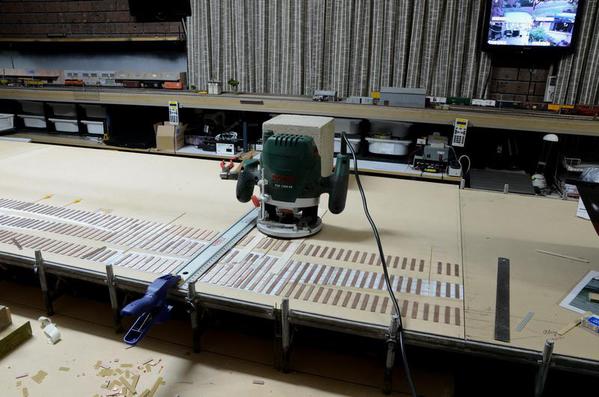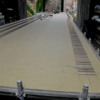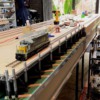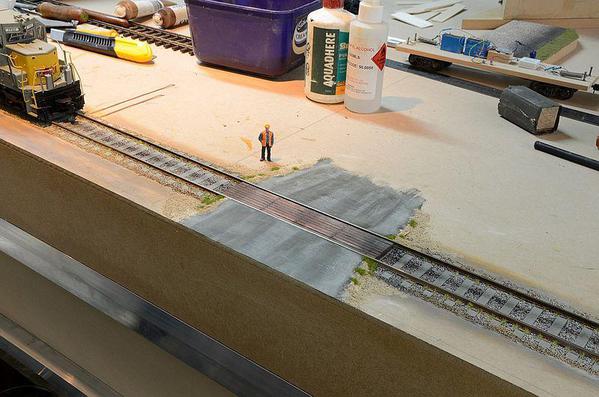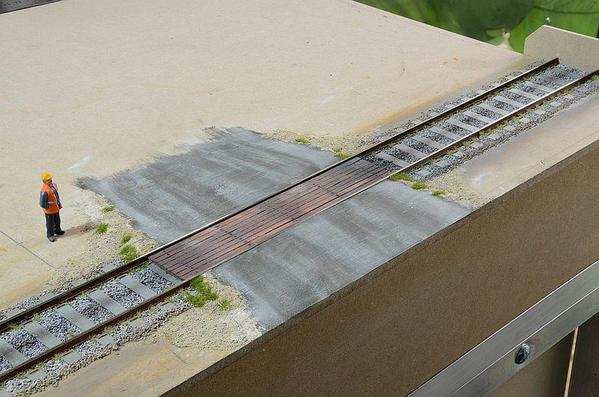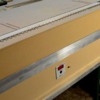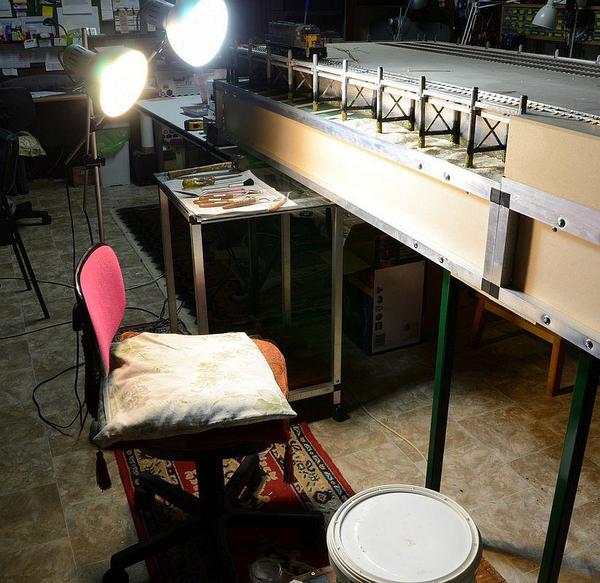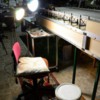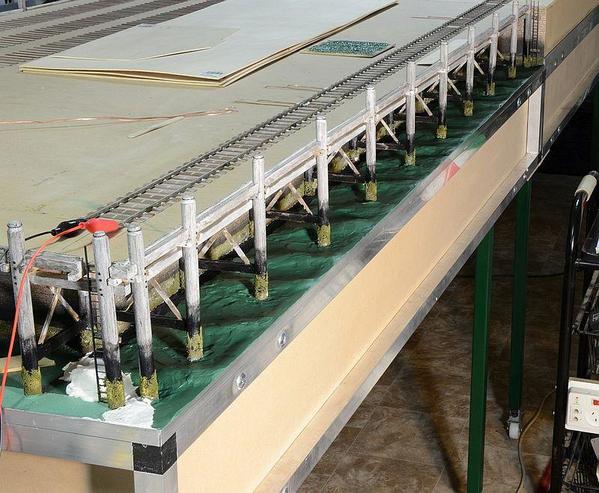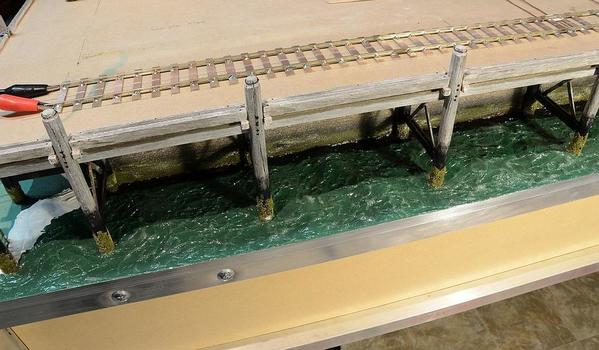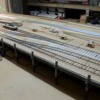Thanks for your thoughts, Pete.
I'm working with reference photos of my local area, so I'm very sure of the look that I'm after. If you go back through the thread to the photos, you will see what I mean. I plan to reduce the troughs when I start in earnest, because I agree that they are still too deep.
The colour is affected by the gel. It doesn't look the same as when it is au natural. I agree as well that I should grey it down a bit. I don't want a blotchy bottom, as the docks area here is a plain sandy bottom. It needs to be more like the reference photos. But I'm getting closer. 
Dragging any kind of tool around in the gel like Troel and I have done so far, makes lines rather than wavelets. This time I've tried dipping my finger into the gel and stamping blobs of gel on to the sample. It pulls the gel upwards as the finger is removed, leaving more of a point.
The gel also slumps like PVA does, but not to the same extent, so I'm hoping for some nice wavelets. It takes more than 24 hours to set up now. I'm applying about 2 mm.
One thing I have noticed; I can get the knife/spoon/finger to slide across the gel as it sets up much better if I wet it first.
I appreciate your interest. 
Cheers




